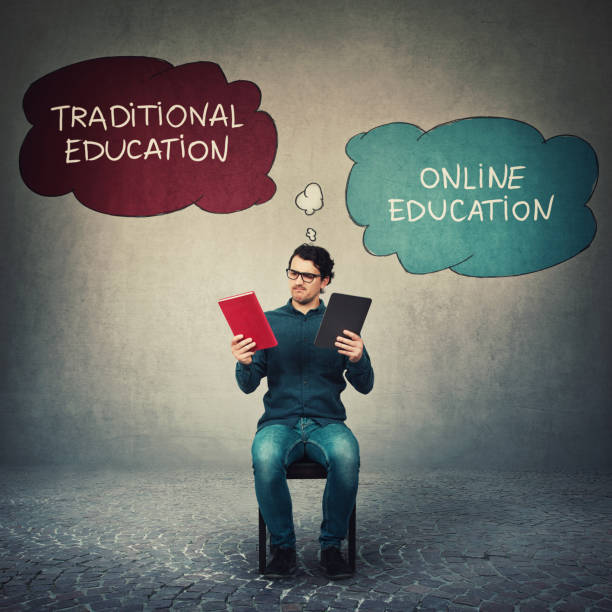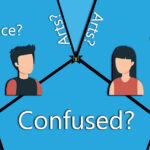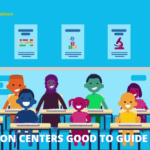The emergence of technology has engulfed every sector by the wave of digitalization, and the education sector is no exception – it has seen a digital revolution in the past decade. Moreover, human reliance on technology has evolved in education, and elearning portals are great examples.
Today, students have more than one option to pursue education – traditional learning and eLearning. Both methods satisfy the needs of students, whether alone or blended. But the choice of a perfect study plan creates a specific dilemma.
This article will discuss both learning methods in detail to help you understand which one is better for your child.
What is Traditional Learning?
Traditional learning involves face-to-face interaction with peers and instructors/tutors. It takes place in an actual classroom setting or at-home tutoring. The instructor moderates and regulates the flow of knowledge and information. Here, the primary source of information is the instructor.
What is ELearning?
It refers to learning through online mediums and virtual platforms (also known as distance learning). Experienced professors or skilled tutors deliver lectures through online audio/ video sessions.
Thanks to its flexibility, it has increased in popularity over the last two decades, especially among the workforce and adult learners.
What Is The Difference Between Traditional & Online Learning?
Many colleges, universities, and tuitions have ramped up their online course offerings amidst a global pandemic. As we approach a new academic year – both existing and new students are in a dilemma “which learning process is best for me?”
Perhaps, you have gotten a clear picture of eLearning during the pandemic quarantine. Maybe you struggled with self-motivation and time management along the way. Or, perhaps you excelled in the comfort of your home and enjoyed working at your own pace. Maybe you fell somewhere in the middle – enjoying the flexibility of online classes while missing the on-campus experience.
Everyone has different experiences with traditional and elearning. Plus, everyone has their preferences for earning a degree. Both processes have cons and pros—modern employers across the industry value both.
Flexibility
The growth of eLearning has been 90% since the year 2000. It does not limit the learners and instructors to a four-walled classroom and doesn’t confine them to a predefined curriculum. furthermore, has the flexibility to take classes on a day and time that is convenient for you. It is the driving force for those with a bulk workload and responsibilities. Technology has connected those willing to learn with those passionate about teaching. But, a traditional class format often lacks flexibility, especially in terms of deadlines and class meeting times.
Cost-effective
While both modes of education have their pros and cons, online learning benefits from being more cost-effective, and many of the courses are cheaper than traditional ones. Some open access courses won’t cost a penny but your time. But, many online courses are offered at a cost equivalent to a conventional college or school fee.
Quality Interaction
Many researchers have declared that eLearning can be more engaging by presenting the study material in attention-grabbing multimedia formats. If the instructor is comfortable with the technology, the student can ask questions. Digital communication tools have simplified the learning process. It includes email, WhatsApp, online forums, and discussion groups. On the other hand, traditional learning involves physical interactions with teachers and peers. It may lead to advancement in your career.
Personalized Learning Experience:
Around 30 to 40 students learn together in traditional learning. And a teacher attends the whole class. The teacher might not meet or address every student’s needs in this case. Online learning leverages technology and individualized teaching models. It ensures a personalized learning experience. Plus, digital learning platforms are equipped with technical tools. They help in promoting a better learning experience.
Better Engagement with the Tutor:
Students learn 5x more through elearning than through the traditional learning model, as every student tends to learn at their own pace. Digital learning allows them to take as much time as they want to absorb. It eliminates the feeling of discouragement among peers. Plus, online learning provides more space and time for students to talk with the tutor. Shy students can easily share course-related queries through messaging or other digital means.
Whereas, in traditional classrooms, the lectures are given on the spot. Students miss a lot of essential points during lectures. It happens due to a lack of synchronization between the tutor and learner.
24/7 Accessibility
Elearning enables students to have free access to all the learning materials. It includes module content, lecture materials, assignments, podcasts, and recorded sessions.
All the content is accessible all around the clock. Module tutors are within easy reach for postgraduate courses. They assist with any questions through messages, Skype calls, Zoom meetings, and emails. A student has to visit the physical location to speak with tutors in traditional learning. The interaction is limited to assigned hours only. It can be limiting, especially for working individuals.
Elearning enables the students to access course materials from anywhere in the world. Their location, time zones, or current status doesn’t matter. It is the best suitable option for everyone—a busy professional studying online in the late hours of the night. Even a homemaker can brush up her knowledge while raising the kids along.
Benefits of Traditional Learning.
Traditional learning is teacher-driven. It implies several students attend the classes at a specific time and place. This setting involves one-on-one lecture-discussion. Plus, combine studies with peers and interaction with the tutor during working hours. The traditional learning process has a few advantages:
- Many experienced teachers are not very comfortable with the new technology.
- A kinetic learner performs more by taking in-person courses with workshops and labs. They cherish the opportunity to network with other learners in the classroom.
- A group of students and teachers work together in a traditional classroom. It helps in building self-confidence in students.
- It cultivates interpersonal skills. Also, it provides a platform to learn and interact in person. These skills further help in personal and professional lives.
- A traditional classroom has set deadlines and schedules to complete assignments. It enables learners to work in high-pressurized environments.
Benefits of Elearning?
Elearning presents many benefits, especially for busy professionals who juggle time and responsibilities. Today businesses are embracing always-connected, always-on culture.
- Online tutoring is favourable for adult learners who juggle work and home. It offers the flexibility of submitting their opinions online. The classroom discussions are more productive because we learn more when we write.
- A greater self-motivation and discipline are the key to successful online education. It makes learners more responsible for their learning, conscious of time and schedule, and efficient in meeting deadlines.
- Online learning is all about individualized learning. It increases student autonomy by allowing them to work at an individualized pace. The student experiences one-on-one, tailored instructions from the teacher. There has been a significant shift from a curriculum-centred to a learner-centred environment, making elearning a winning proposition.
- Elearning might be more current instead of relying on out-of-date textbooks. Its modules are updated to pace up with the evolution in information.
- You don’t need a car, a new wardrobe, or a backpack. Simply sit down on your comfy couch with your computer and type.
Which One Is Better?
The educational field is constantly evolving because of emerging technology. With new trends emerging, new research reveals the best training tactics. The best hack to be on top of your shifting career is to learn through a process.
Which learning method should you choose?
Traditional classes are more productive for pre-primary and primary students. Younger students tend to have short attention spans. Face-to-face learning helps them interact with their peers. It instils discipline by following a regular schedule. Plus, traditional learning offers continuous interaction between teachers and students. Thus, it helps in overcoming the fear of exams.
On the other hand, eLearning inculcates a sense of discipline among students. The learners hold a great responsibility for their learning. It instils the element of self-motivation to meet deadlines. They are conscious of their time and schedule.
Successful eLearners are digitally literate. They are trained for the dynamic technical environment. Plus, they strive to enhance their expertise in technological tools.
So how will you decide which method is best for you? Both learning methods are effective. It all boils down to the proverb: “each to his own.”
Make the Final Choice:
There is no wrong or right answer to the final verdict of traditional learning vs. eLearning.
There are countless reasons why eLearning could take the world by storm. The internet has made quality education more accessible than ever. Learners from remote areas of the world can study with the best online tutors. People don’t need to give up their dreams anymore if they cannot travel amidst a pandemic.
When it comes to the final choice, everything depends on personal preference. Plus, knowing how you learn best. Both methods are highly effective. You need to do some self-evaluation before making the final choice.







Recent Comments